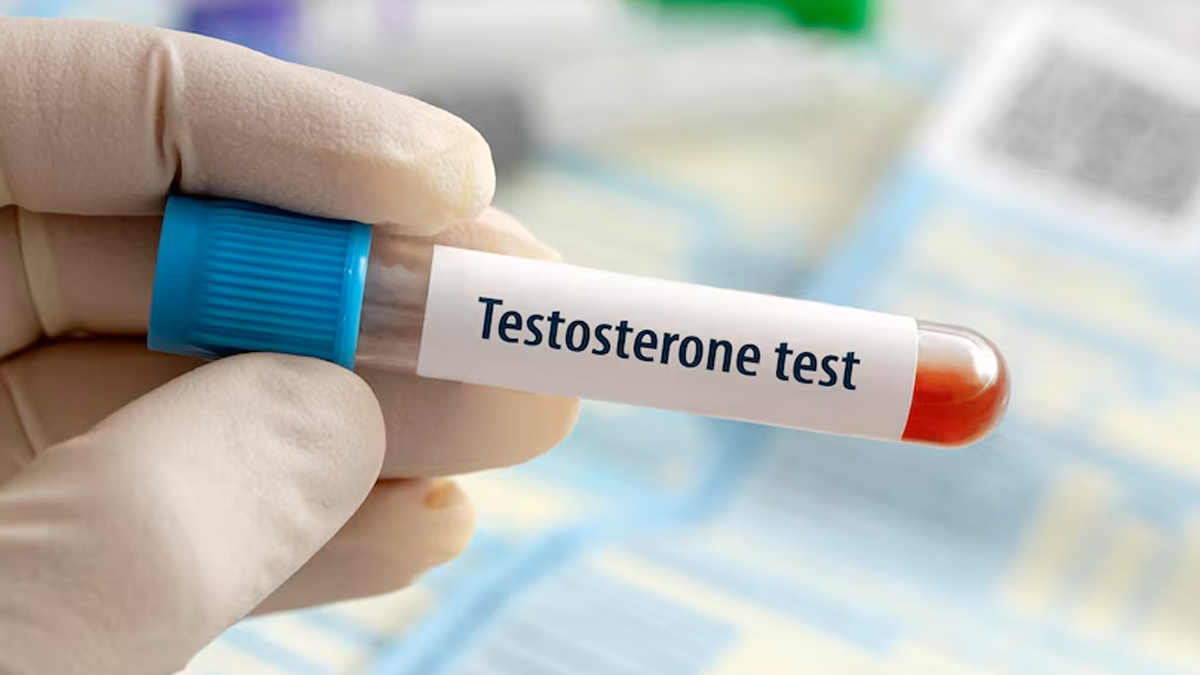
American actor Kate Winslet, 48, recently revealed that testosterone replacement therapy has helped her “feel sexy again.” Speaking on the ‘How To Fail with Elizabeth – Part 1’ podcast, Winslet shared that many women experience a decline in libido due to various health issues, including thyroid problems and reduced testosterone levels.
Table of Content:-
“Most people don’t realise that women produce testosterone, and when levels drop significantly — similar to the depletion of eggs — it can impact how you feel. Replacing it is an option, and it can make a real difference. I’ve experienced it myself,” she explained.
This has sparked conversations around hormone use in women’s sexual health. While testosterone is often associated with men, it plays a vital role in female physiology as well, particularly for those experiencing menopause-related symptoms such as low libido. However, experts caution that Testosterone Replacement Therapy (TRT) is not for everyone.
To understand this in detail, OnlyMyHealth team interacted with Dr Pooja C Thukral, Consultant - Obstetrician and Gynaecologist, Cloudnine Group of Hospitals, Faridabad.
Highlighting the complexities surrounding hormone therapy for women in India, Dr Thukral said, “In India, women do not take Hormone Replacement Therapy (HRT) as much as women in the Western world due to the irrational fear of developing cancer. Testosterone as an HRT seems far-fetched at the moment.” She adds that Winslet’s decision may act as a harbinger of change but urges caution, stating that TRT should only be pursued under medical supervision after evaluating individual needs.
Understanding Testosterone in Women’s Health

Often labelled as a ‘male hormone’, testosterone, as per studies, is produced in smaller amounts in women, primarily in the ovaries and adrenal glands. It plays a crucial role in maintaining libido, bone density, muscle mass, and mood. Women’s testosterone levels peak in their 20s and decline with age, potentially leading to symptoms like decreased sexual desire, fatigue, and mood changes, especially during and after menopause.
TRT involves supplementing the body’s natural testosterone levels through gels, patches, or injections. The goal is to restore hormonal balance, thereby improving sexual function, energy levels, and mood. However, it is essential to approach this therapy cautiously, considering both its potential benefits and risks.
Why Doctors Don’t Recommend It Universally

While Kate Winslet’s choice to undergo TRT has brought attention to this therapy, medical professionals emphasise that it is not universally recommended for women. Dr Thukral notes, “Testosterone replacement therapy is not a ‘one-size-fits-all’ solution. It should be carefully considered, especially for women.”
One major concern is the limited research on the long-term effects of testosterone therapy in women. Most studies have focused on men, and while some research suggests that testosterone can improve sexual function in women, particularly those with hypoactive sexual desire disorder (HSDD), the data is still insufficient to support widespread use.
Furthermore, Dr Thukral said that testosterone use in women is currently considered “off-label”, meaning it hasn’t been officially approved for this purpose by regulatory authorities like the FDA. This lack of regulatory approval means that the benefits and risks have not been thoroughly evaluated in large-scale clinical trials. Therefore, women considering TRT should consult with a healthcare provider to assess the potential risks and benefits based on their specific circumstances.
Potential Risks and Side Effects
Testosterone therapy, while beneficial for some, can come with risks and side effects. “We need to monitor the levels of testosterone while on therapy to maintain the levels within the normal range for women and avoid androgenic side effects,” says Dr Thukral.
Furthermore, Dr Thukral said, “Because women naturally have lower testosterone levels, even small increases can cause side effects such as acne, hair loss, deepening of the voice, increased body hair, and mood swings. There are also concerns about the impact of long-term testosterone use on heart health and breast cancer risk, though more research is needed to draw definitive conclusions.”
Also read: 4 Ways To Fix Your Declining Libido, AKA, Your Nosediving Sex Drive
Alternatives to Testosterone Therapy

For women experiencing low libido and other menopausal symptoms, testosterone therapy is not the only option. “Lifestyle changes, such as improving diet, exercise, sleep, and stress management, can often have a significant impact on sexual health. Regular physical activity can enhance blood flow, boost energy levels, and improve mood, all of which contribute to a healthier sex drive,” Dr Thukral advised.
“Psychological therapies, including counselling or sex therapy, can also be beneficial for addressing emotional or relationship-related factors that may be contributing to low libido,” she added. For many women, sexual desire is closely tied to emotional well-being and relationship dynamics, and addressing these factors can be as effective as hormone therapy.
Conclusion
As Kate Winslet’s decision to undergo TRT continues to make headlines, it’s important to remember that hormone therapy is a complex and personal decision. Dr Thukral advises, “Women should seek guidance from healthcare providers to make informed choices about their sexual health.”
Also watch this video
How we keep this article up to date:
We work with experts and keep a close eye on the latest in health and wellness. Whenever there is a new research or helpful information, we update our articles with accurate and useful advice.
Current Version